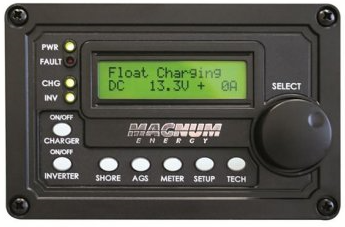spacenorman
Well-known member
- Joined
- Feb 28, 2015
- Posts
- 259
I've got a 2012 Holiday Rambler Endeavor 43 DFT that I want to connect to a single 15 amp residential circuit so that I can power the refrigerator and a few LED house lights while parked in front of our home for 12-18 hours prior to our departure. I've got all the physical connections covered - i.e., the extension cord and necessary dogbones to make the connection from a 50amp plug on the coach - to a standard 3 prong plug that I can connect to an extension cord plugged into a standard 15 amp circuit. My question is focused on what adjustments should I be making at the control panel (a typical Magnum ME-RC50 panel). What parameters do I need to "tweak" to set the system to run off the 15 amp shore power source?

